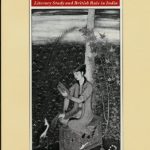 Much like its eponymous waterway, V.S. Naipaul’s A Bend in the River meanders steadily through the dark reality of postcolonial Africa, alternately depicting minimalist beauty and frightening tension. Like Joseph Conrad’s Heart of Darkness, subtle prose reveals the timelessness of the continent’s remote corners alongside human corruptibility. Yet, Naipaul moves his narrative closer in time to contemporary Africa, demonstrating that the horrifying legacies of colonialism did not end with Europe’s retreat. In A Bend in the River, the struggle to establish national identities in the wake of Western imperialism takes center stage, with “black men assuming the lies of white men” in order to govern.
Much like its eponymous waterway, V.S. Naipaul’s A Bend in the River meanders steadily through the dark reality of postcolonial Africa, alternately depicting minimalist beauty and frightening tension. Like Joseph Conrad’s Heart of Darkness, subtle prose reveals the timelessness of the continent’s remote corners alongside human corruptibility. Yet, Naipaul moves his narrative closer in time to contemporary Africa, demonstrating that the horrifying legacies of colonialism did not end with Europe’s retreat. In A Bend in the River, the struggle to establish national identities in the wake of Western imperialism takes center stage, with “black men assuming the lies of white men” in order to govern.
The work follows Salim, an ethnically Indian trader who moves to the newly independent hinterland of an anonymous Francophone state modeled on the former Belgian Congo. The rise and fall of African modernity occurs slowly under the disembodied image of the dictatorial “Big Man” – a depiction eerily similar to Mobutu Sese Seko – who introduces relative security through the constant threat of violence. While building his mercantile business and conducting an affair with a married woman, Salim witnesses the nation devolve into a state of xenophobia, corruption, and general malaise. The character’s growing feelings of alienation and the struggle to maintain his livelihood provide the novel with narrative momentum. They also demonstrate the divisions that often emerged during the creation of postcolonial national identities and the problems common to the despotic state. Thus, Naipaul’s insular setting serves as a symbol of the transitory nature and uncertain future of the continent as a whole: “This piece of earth – how many changes had come to it! Forest at a bend in the river, meeting place, an Arab settlement, a European outpost, a European suburb, a ruin like the ruin of a dead civilization, the glittering Domain of new Africa, and now this.”
More than just a piece of fiction, Naipaul’s work offers an introspective reflection on the practices of western modernity and the meaning of life in a period of upheaval. Essentially likeable, Salim becomes the vehicle for trenchant observations on morality, passion, and progress. A cast of supporting characters represents the failures of contemporary society: Metty, the naive servant clinging to abandoned social conventions; Mahesh, the superficial franchiser of the first western fast food chain in the bush town; Ferdinand, a malleable and ultimately disenchanted youth who becomes an African nationalist; and Raymond, the satirical former colonial who desperately seeks to portray the mercurial Big Man as the savior of Africa. Relatively uneventful and filled with intentionally unresolved subplots, the novel moves from one life experience to another as the protagonists seek only to survive under trying circumstances. Yet, the author’s eye for detail and crisp writing adeptly create a sense of tension and drama that pervades even the quietest corners of the book, culminating in an ambiguous ending reminiscent of Marlowe’s journey on an older river. Meditative, challenging, yet wholly engrossing, Naipaul’s novel deserves its fame as a monument of postcolonial literature.



